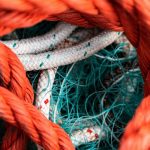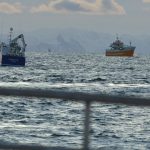The king crab, also known as the Kamchatka crab, is spreading fast in the Barents Sea and the Bering Sea. It is also the subject of major concern to ecologists, the fish industry and fishery authorities seeing it as a threat to the local eco-system. The Norwegian authorities have decided to restrict the spreading of the crab. In a press release from the Norwegian Ministry of Fisheries and Coastal Affairs, unrestricted free catch of the crab is extended to parts of the Porsanger Fjord and areas east of the 26 longitude. From before, there is free catch on the crab to the west of the 26 longitude.
Since its introduction in 1960s in the Barents Sea the king crab has spread west along the Norwegian coast and also towards the island group of Svalbard. Environmentalists and some local fishermen fear the crab because it eats everything it comes across and is spreading very rapidly.
It is said that the king crab was introduced artificially during the 1960s when the first animals were planted in the Murmansk Fjord to provide new catch for Soviet fishermen. Since then it is multiplying unbelievably, which raises the concerns among the authorities. So it has been decided to allow free catch for sometime to minimize the spreading of king crab in these areas.








